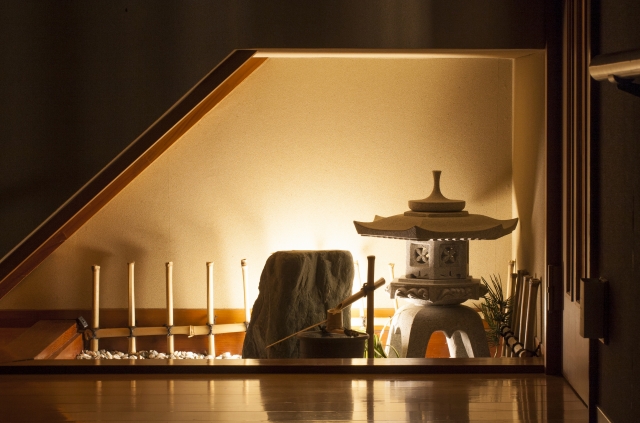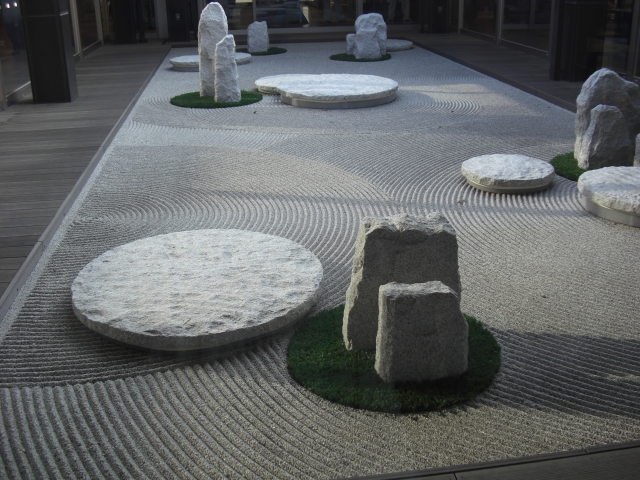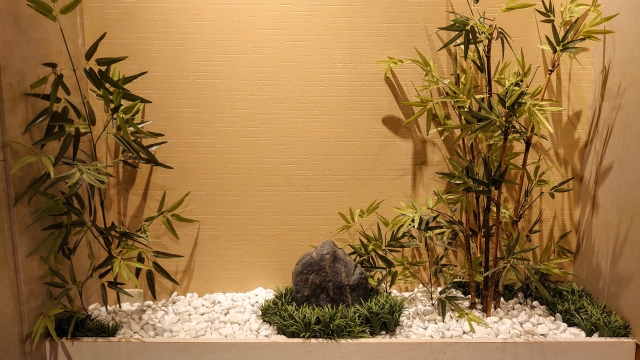In recent years, there has been a growing trend to incorporate a “Japanese garden” into a corner of a home or office. These so-called “indoor Japanese gardens” are attracting attention because they allow people to experience the wabi-sabi aesthetic and Zen spirit even in a small space. Here are some tips on how to enjoy such indoor Japanese gardens and how to incorporate healing and karesansui (dry landscape garden) elements.

1. Benefits of bringing elements of a Japanese garden indoors
First of all, when you hear the word “Japanese garden,” you probably imagine a serene landscape that makes the most of natural materials such as stones, moss, ponds, and sand patterns. The greatest advantage of bringing this into the room is that you can easily feel the healing and Zen spirit in your daily life. Also, even in a small space, you can create a sufficiently atmospheric space if you make the right points.
2. Wabi-sabi aesthetic sense takes shape
Japanese gardens are rooted in a unique sense of beauty called “wabi-sabi. Wabi-sabi, which avoids ornate decorations, and is said to have a deep flavor in its imperfection and simplicity, can be practiced even in a small indoor garden. For example,
- Stone and moss with texture
- Plantings in soothing tones
- Minimal decoration
Combining these elements can create a space with natural beauty and an old-fashioned feel.

3. How to incorporate the spirit of Zen and Karesansui
Japanese gardens and Zen are inseparable. The style known as karesansui (dry landscape garden) symbolizes the philosophy of Zen. Karesansui, which expresses a landscape scene with sand and stones without using water, is characterized by low maintenance and is suitable for indoor use.
- Calm the mind by drawing a pattern like flowing water (sand pattern) on white sand.
- Stones of reasonable size are arranged to resemble “mountains” and “islands.
- Add moss or small plants to accentuate the sense of tranquility.
The indoor garden of Karesansui (dry landscape garden) provides indescribable healing just by looking down at it.
4. Practical Tips for Incorporating an Indoor Japanese Garden
- Securing space
It can be a small area, such as a doorway, a corner of the living room, or a table top. - Light and shadow production
In Japanese gardens, shadows enhance the beauty of the garden, so use a good combination of LED lights and natural light. - Material selection
Just the presence of karesansui sand, moderately rounded stones, and moss instantly enhances the Japanese atmosphere. - Regular care
The process of removing dead leaves and redrawing the sand pattern itself is akin to the spirit of Zen, and provides a moment of “no mind” in the midst of a busy daily routine.

Cnclusion
Indoor Japanese gardens, which bring elements of Japanese gardens indoors, are an attractive way to experience the spirit of wabi-sabi and Zen, regardless of the size of the space. Even a simple composition centered around a karesansui (dry landscape garden) can provide a deep sense of “healing” and “tranquility. Why not add a little Japanese space to your busy daily life and spend your own peaceful time?

